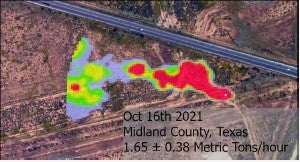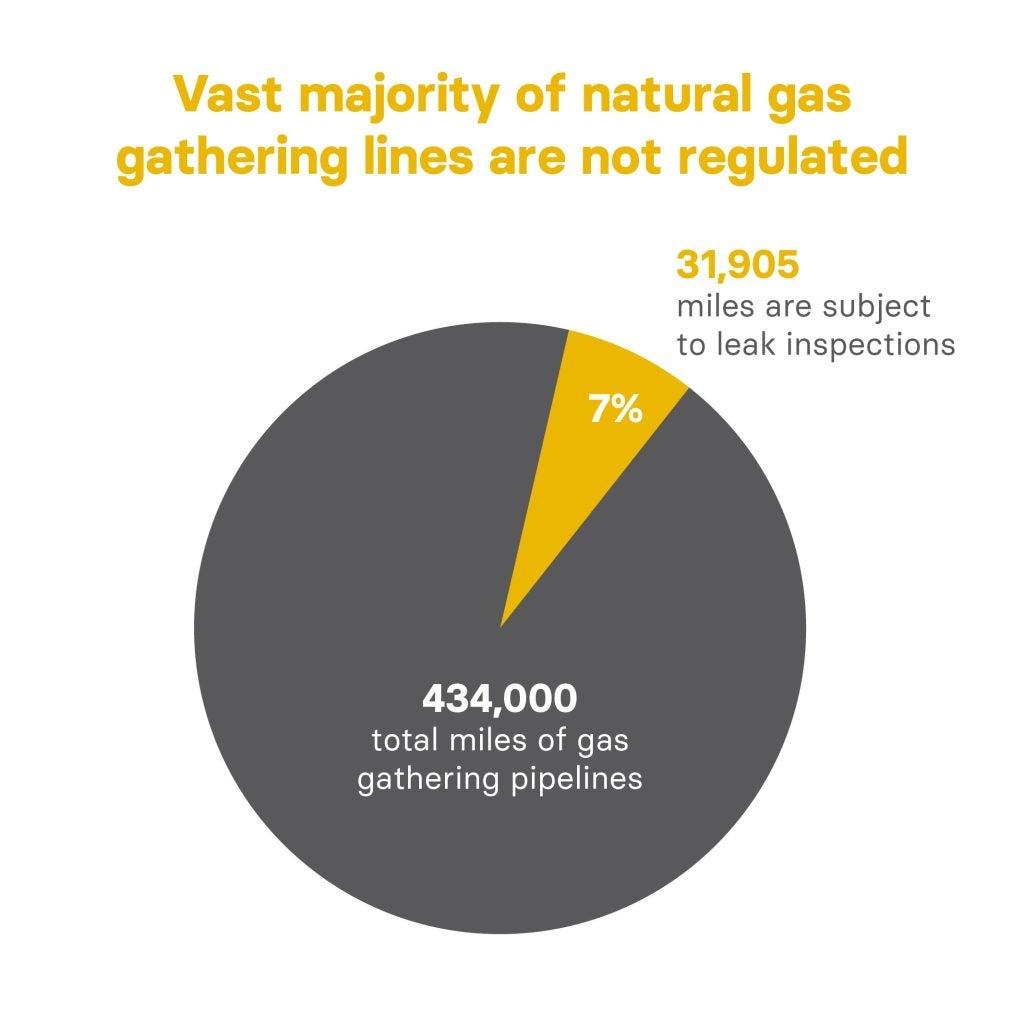By Erin Murphy and Jevan Yu
Methane emissions from natural gas gathering pipelines in the U.S. Permian Basin are at least 14 times greater than Environmental Protection Agency national inventory estimates, according to new peer-reviewed research from EDF, Stanford University and the University of Arizona. Gathering lines transport unprocessed gas from well sites to processing facilities and vary widely in size and pressure, with diameters ranging from two inches to as large as 30 inches. Methane is a potent greenhouse gas with over 84 times the warming potential of carbon dioxide over its first 20 years in the atmosphere, and this new research indicates the importance of finding and fixing pipeline methane leaks to mitigate the climate crisis.
Methane emissions from gathering lines are higher than previously thought
After extensive surveys and subsequent analysis, the research found numerous large gathering line leaks that persisted over months and even years. As part of EDF’s PermianMAP project, oil and gas infrastructure was surveyed in four aerial campaigns during 2019-2021 using aircraft equipped with a sensor capable of imaging and quantifying large plumes of methane. The flights surveyed more than 10,000 miles of gathering pipelines in each campaign, identifying hundreds of high-emitting pipeline sources.
Research shows gathering pipelines in the Permian Basin leaking 14 times more methane than officials estimate Share on XThe scale of methane being released from gathering lines is much higher than previously thought. The new study finds that Permian Basin gathering line emissions are at least 213,000 metric tons per year. This corresponds to an emission factor of 2.7 metric tons per year per kilometer of pipeline, which is 14 times greater than the U.S. EPA national inventory estimates. Applying this estimate to all gas gathering pipelines nationwide for illustrative purposes would increase the EPA inventory estimate for the entire natural gas system by 27%.
Those 213,000 metric tons of methane have the same annual climate impact as 3.7 million passenger vehicles and represent enough wasted gas to meet the needs of 2.1 million homes.
A small number of leaks on gathering lines are responsible for most of the methane emissions, like other segments of the oil and gas supply chain, with about 15% of the largest leaks accounting for 50% of total emissions detected. Thus, finding and fixing a relatively small number of leaks could have significant climate benefits.
Notably, during the course of four survey campaigns across 2019-2021, the overall methane emissions estimate dropped over time (while remaining consistently higher than prior national estimates). EDF scientists sought to contact pipeline operators to provide information about identified leaks during the campaigns, which could indicate that operators acted on the information to address methane leaks on their system and point to the value of regular emission screening.
Gathering lines should be subject to leak survey and repair requirements
There is an extensive network of over 435,000 miles of gathering lines in the U.S., but the vast majority of these pipelines are still not subject to federal standards for leak surveys and repair.
A landmark rule issued by the Pipeline and Hazardous Materials Safety Administration in Nov. 2021 established basic safety standards for an additional 90,000 miles of gathering lines, and for the first time required annual reporting on all gathering lines. Previously only about 10,000 miles of lines were subject to federal leak survey and repair standards, and the rule increased that to over 30,000 miles. While this progress is important, the overwhelming majority of gathering lines remain unregulated, which is inadequate to protect people and the environment.
The new research findings indicate an urgent need to improve oversight and maintenance of gas gathering lines. Advanced pipeline leak detection technologies and analytics, such as those used for the study, are readily available and provide multiple advantages to identify more methane leaks.
Surveys need to cover a large area to identify the most consequential leaks across lengthy, complex gathering networks in remote areas, making aerial surveys more effective than vehicles on the ground. Available advanced technologies provide actionable data so that operators can not only locate and fix the leaks, but also quantify reductions in methane emissions.
It is essential that PHMSA prioritize its advanced leak detection rulemaking, which is required by the PIPES act of 2020 (Section 113) but has recently been delayed. And while the Act sets a floor—that the new rule should apply at minimum to gathering lines in closest proximity to people—the agency should continue to raise the bar to address leaks across gas gathering systems. In particular, PHMSA should enhance its pipeline leak standards by (1) requiring regular leak surveys for all U.S. gathering lines and (2) requiring the use of aerial advanced technologies.
These steps will reduce methane emissions and improve the safety of pipeline infrastructure, and this latest study underscores the urgent need for such measures.











